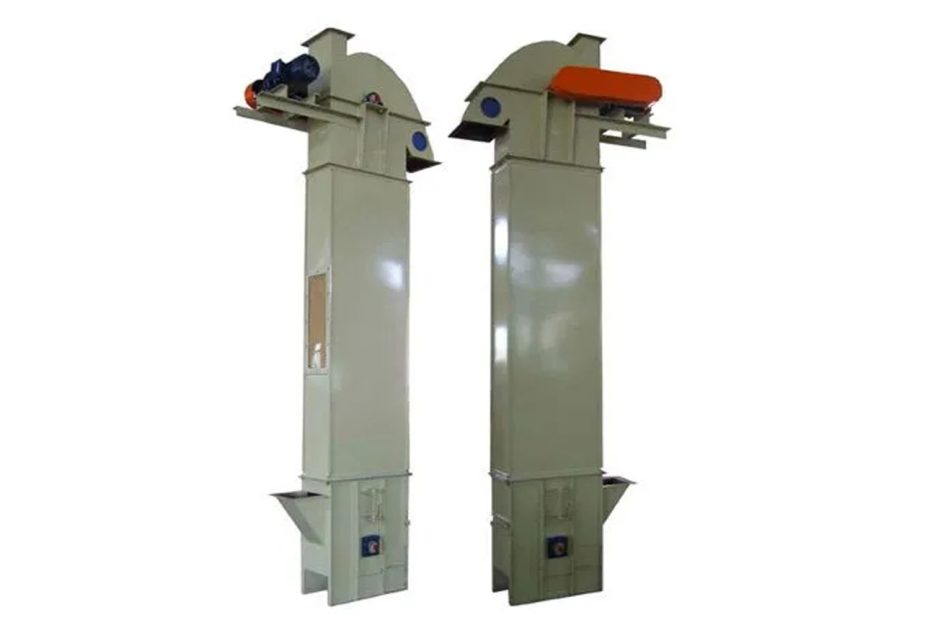Bucket elevator, also known as bucket conveyor or bucket elevator, is a mechanical conveying equipment used to transport powdery, granular, blocky and other materials in the vertical direction.
The bucket elevator has simple structure, high transmission efficiency, and large conveying height, and is widely used in grain, oil, feed, chemical fertilizer, ore and other industries.
Top 6 Selection principle of bucket elevator
Choosing a suitable bucket elevator is not only very important to the rationality of the engineering design scheme and the effect of the process technology, but also has a great impact on the performance, service life and safety of the equipment.
The selection principles of bucket elevators include process equipment installation requirements, material type, conveying capacity, tonnage, unloading method and operating environment, etc.
Determine the type of bucket elevator according to the requirements of the process and related conditions. Grain and feed processing plants can generally choose fixed belt bucket elevators; but if the load is particularly heavy, the working conditions are very poor, and the oil factory needs to transport semi-finished products, fixed chain bucket elevators can be considered.

- According to the requirements of process equipment installation, determine the feeding method; according to the type of material and related conditions, determine the form of bucket. Under normal circumstances, reverse feeding should be used; however, for the needs of process equipment arrangement, forward feeding can also be used; for conveying materials with better fluidity and scattering, deep or bottomless buckets can be selected, and centrifugal feeding can be used. Unloading: To transport materials with high moisture content, high viscosity, poor fluidity and scattering, shallow buckets should be used, and gravity unloading should be used.
- The model selection of the bucket elevator should be based on the different properties and space conditions of the materials, and the appropriate model should be selected. Common models are: chain type, dust-free type, fixed type and movable type.
- The selection of conveying capacity should consider factors such as stockyard capacity, material particle size and humidity to ensure conveying efficiency and capacity.
- The choice of tonnage should be determined according to factors such as material bulk density, bucket form and height, so as to make full use of the conveying capacity and lifting height of the bucket elevator.
- The choice of unloading method should be determined according to factors such as the adhesion, scattering and fluidity of the material, so as to achieve efficient material unloading and processing.
- The selection of environmental conditions should consider factors such as temperature, humidity, fire resistance, explosion resistance, noise, etc., to ensure the normal operation and safe use of the bucket elevator.
In conclusion
The principle of choosing a bucket elevator needs to comprehensively integrate different factors. Choose the bucket elevator that suits you according to the requirements of process equipment installation, material type, conveying capacity, tonnage, unloading method and operating environment.
